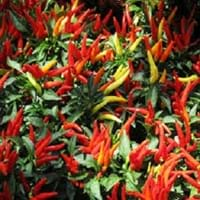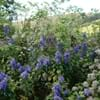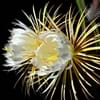Life Span
Perennial
Perennial
Type
Flowering Plants
Vegetable
Origin
Not Available
Mexico, Central America, South America
Types
Aconitum napellus
Bell Pepper
Jalapeno
Poblano
Pequin Pepper
Aleppo pepper
Habitat
Damp shady woods, meadows
Cropland, gardens, Grassland, Homesteads, Tropical regions
USDA Hardiness Zone
12-15
9-11
Sunset Zone
21, 22, 23, 24
A1, A2, A3, H1, H2, 1a, 1b, 2a, 2b, 3a, 3b, 4, 5, 6, 7, 8, 9, 10, 11, 12, 13, 14, 15, 16, 17, 18, 19, 20, 21, 22, 23, 24
Habit
Oval or Rounded
Oval or Rounded
Minimum Height
Not Available
Minimum Width
Not Available
Flower Color
Yellow
Purple
Flower Color Modifier
Not Available
Bicolor
Fruit Color
Green
Yellow, Red, Green, Purple, Orange
Leaf Color in Spring
Not Available
Green, Light Green
Leaf Color in Summer
Not Available
Green
Leaf Color in Fall
Not Available
Green, Black
Leaf Color in Winter
Not Available
Green
Leaf Shape
Compound
Oblong elliptic
Plant Season
Not Available
Spring, Summer, Fall
Sunlight
Not Available
Full Sun
Growth Rate
Very Slow
Fast
Type of Soil
Not Available
Loam, Sand
The pH of Soil
Not Available
Neutral
Soil Drainage
Not Available
Well drained
Bloom Time
Spring
Spring, Summer, Fall, Indeterminate
Repeat Bloomer
Not Available
Yes
Tolerances
Not Available
Drought
Where to Plant?
Ground
Ground, Pot
How to Plant?
reseeds
Seedlings
Plant Maintenance
Medium
Medium
Watering Requirements
Do not let dry out between waterings
Keep the ground moist but not water-logged, Water Deeply, Water when soil is dry
In Summer
Lots of watering
Lots of watering
In Spring
Moderate
Moderate
In Winter
Average Water
Average Water
Soil pH
Not Available
Neutral
Soil Type
Not Available
Loam, Sand
Soil Drainage Capacity
Not Available
Well drained
Sun Exposure
Not Available
Full Sun
Pruning
Remove damaged leaves, Remove dead branches, Remove dead leaves
Remove damaged leaves, Remove dead branches, Remove dead leaves
Fertilizers
All-Purpose Liquid Fertilizer
All-Purpose Liquid Fertilizer
Pests and Diseases
Red blotch
Red blotch
Plant Tolerance
Drought
Drought
Flowers
Not Available
Insignificant
Flower Petal Number
Single
Single
Fragrant Flower
Not Available
No
Fragrant Fruit
Not Available
No
Fragrant Leaf
Not Available
No
Fragrant Bark/Stem
Not Available
No
Showy Foliage
Not Available
No
Showy Bark
Not Available
No
Foliage Texture
Bold
Medium
Foliage Sheen
Not Available
Glossy
Invasive
Not Available
No
Self-Sowing
Not Available
No
Attracts
Hummingbirds
Butterflies
Allergy
poisonous if ingested, Toxic
no allergic reactions
Aesthetic Uses
Not Used For Aesthetic Purpose
Showy Purposes
Beauty Benefits
Not Available
Not Available
Environmental Uses
Air purification
Air purification
Medicinal Uses
Analgesic, Anodyne, Diaphoretic, Homeopathy, Used as a sedative
Not Available
Part of Plant Used
Root
Fruits
Other Uses
Not Available
Culinary use, Showy Purposes, Used as Ornamental plant
Used As Indoor Plant
No
No
Used As Outdoor Plant
Yes
Yes
Garden Design
Not Available
Bedding Plant, Container, Cutflower, Edible, Herb / Vegetable, Mixed Border, Tropical
Botanical Name
Aconitum
CAPSICUM annuum 'Aurora'( Conoides Group)
Common Name
aconite, monkshood, wolf's bane, leopard's bane, mousebane, women's bane, devil's helmet, Queen of all Poisons, blue rocket
Aurora Pepper, Ornamental Pepper
In Hindi
बच्छनाभ
सजावटी मिर्च
In German
Eisenhut
Ornamental Pfeffer
In French
Queen of all Poisons
ornement poivre
In Spanish
Queen of all Poisons
Ornamental Pepper
In Greek
Queen of all Poisons
Διακοσμητικά πιπέρι
In Portuguese
Queen of all Poisons
ornamental pimenta
In Polish
Tojad
ozdobne Pieprz
In Latin
Queen of all Poisons
decentius Pepper
Phylum
Tracheobionta
Not Available
Class
Magnoliopsida
Magnoliopsida
Order
Ranunculales
Solanales
Family
Cactaceae
Solanaceae
Clade
Angiosperms, Eudicots
Angiosperms, Monocots
Tribe
Delphinieae
Not Available
Subfamily
Not Available
Asteroideae
Number of Species
Not Available
Importance of Queen of all Poisons and Ornamental Pepper
Want to have the most appropriate plant for your garden? You might want to know the importance of Queen of all Poisons and Ornamental Pepper. Basically, these two plants vary in many aspects. Compare Queen of all Poisons and Ornamental Pepper as they differ in many characteristics such as their life, care, benefits, facts, etc. Every gardener must at least have the slightest clue about the plants he wants to plant in his garden. Compare their benefits, which differ in many ways like facts and uses. The medicinal use of Queen of all Poisons is Analgesic, Anodyne, Diaphoretic, Homeopathy and Used as a sedative whereas of Ornamental Pepper is Not Available. Queen of all Poisons has beauty benefits as follows: Not Available while Ornamental Pepper has beauty benefits as follows: Not Available.
Compare Facts of Queen of all Poisons vs Ornamental Pepper
How to choose the best garden plant for your garden depending upon its facts? Here garden plant comparison will help you to solve this query. Compare the facts of Queen of all Poisons vs Ornamental Pepper and know which one to choose. As garden plants have benefits and other uses, allergy is also a major drawback of plants for some people. Allergic reactions of Queen of all Poisons are poisonous if ingested and Toxic whereas of Ornamental Pepper have no allergic reactions respectively. Having a fruit bearing plant in your garden can be a plus point of your garden. Queen of all Poisons has no showy fruits and Ornamental Pepper has showy fruits. Also Queen of all Poisons is not flowering and Ornamental Pepper is not flowering . You can compare Queen of all Poisons and Ornamental Pepper facts and facts of other plants too.





